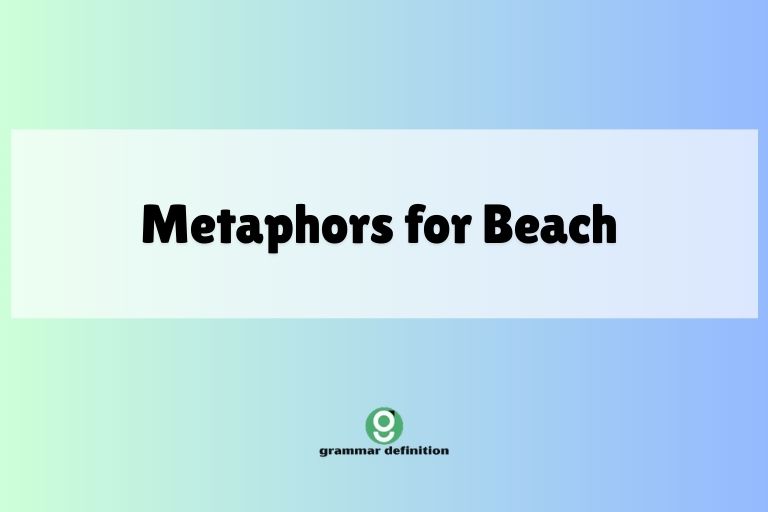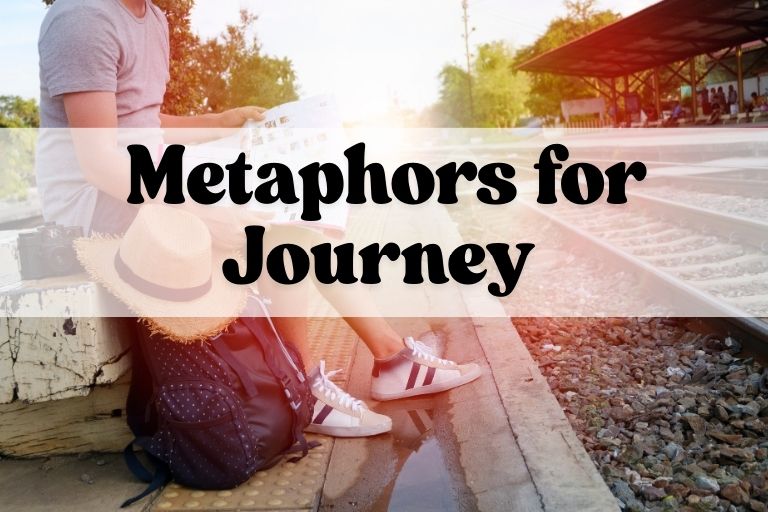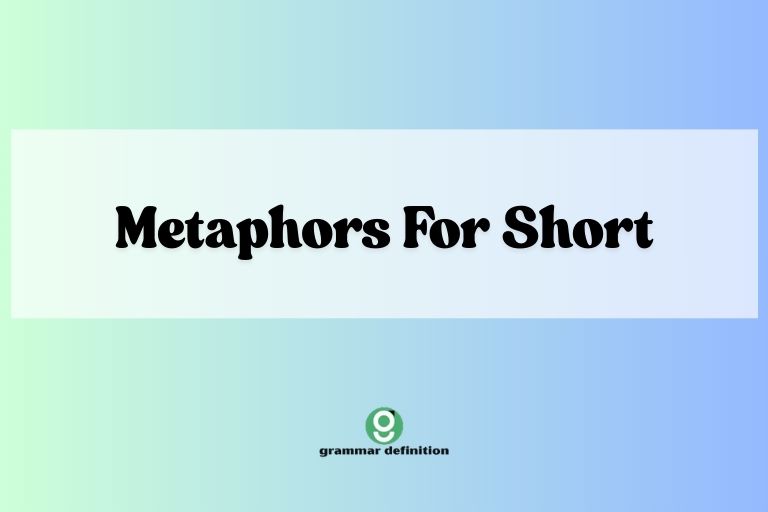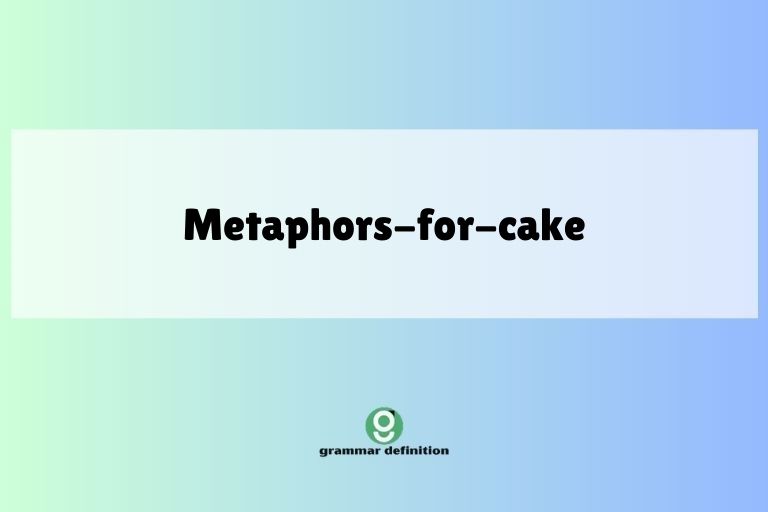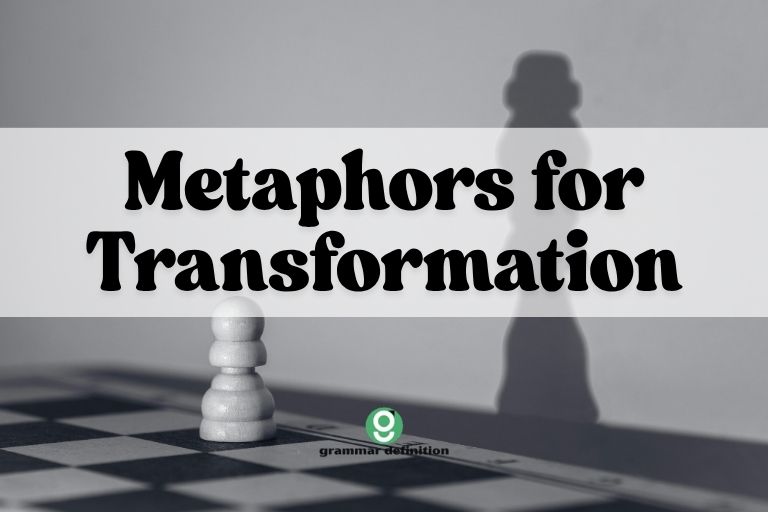Figurative Feast: Mastering Hunger Metaphors in English
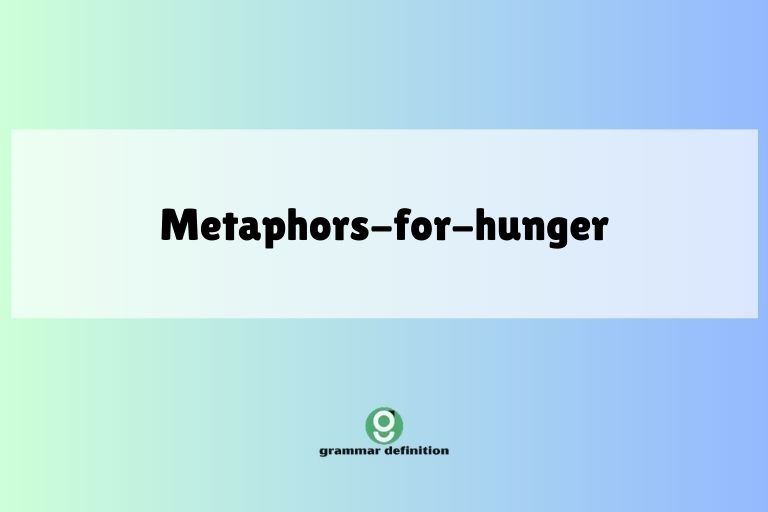
Understanding metaphors is crucial for mastering English, enhancing both comprehension and expression. Metaphors for hunger, in particular, add vividness and emotional depth to our language.
This article explores the rich landscape of hunger metaphors, providing a comprehensive guide for English learners of all levels. Whether you’re a beginner seeking to grasp basic concepts or an advanced student aiming to refine your stylistic skills, this detailed exploration will equip you with the knowledge and tools to effectively understand and use these powerful figures of speech.
By delving into the nuances of hunger metaphors, you’ll not only expand your vocabulary but also gain a deeper appreciation for the art of figurative language.
This guide will break down the complexities of hunger metaphors, providing clear definitions, structural analyses, diverse examples, and practical exercises. We’ll explore common usage rules, address frequent mistakes, and even touch upon advanced topics for those seeking a deeper understanding.
By the end of this article, you’ll be able to confidently identify, interpret, and employ hunger metaphors in your own writing and speech.
Table of Contents
- Definition of Hunger Metaphors
- Structural Breakdown
- Types and Categories of Hunger Metaphors
- Examples of Hunger Metaphors
- Usage Rules
- Common Mistakes
- Practice Exercises
- Advanced Topics
- FAQ
- Conclusion
Definition of Hunger Metaphors
A metaphor is a figure of speech that directly compares two unlike things without using “like” or “as.” It asserts that one thing is another, creating a vivid and often surprising association. Hunger metaphors, specifically, use the concept of hunger—a basic human need for sustenance—to describe other kinds of strong desires, cravings, or deficiencies. These metaphors tap into the primal feeling of emptiness and longing to convey the intensity of emotions or the urgency of needs in various contexts.
Hunger metaphors can be applied to a wide range of subjects, from intellectual curiosity to emotional yearning and even abstract concepts like justice or power. They provide a powerful way to express the depth and urgency of these desires, making them relatable and impactful to the audience.
By understanding how hunger metaphors function, we can better appreciate their role in enriching language and conveying complex ideas.
Classification of Metaphors
Metaphors can be classified in several ways, including:
- Standard Metaphors: These are commonly used and easily understood metaphors (e.g., “a burning desire”).
- Novel Metaphors: These are original and creative metaphors that offer a fresh perspective.
- Dead Metaphors: These are metaphors that have become so commonplace that they are no longer recognized as metaphors (e.g., “the leg of a table”).
- Mixed Metaphors: These are combinations of two or more incompatible metaphors, often creating a humorous or confusing effect.
Function of Hunger Metaphors
Hunger metaphors serve several important functions in language:
- Emphasis: They intensify the feeling or desire being described.
- Clarity: They make abstract concepts more concrete and relatable.
- Emotional Impact: They evoke strong emotions by tapping into the primal experience of hunger.
- Imagery: They create vivid mental images, making the language more engaging and memorable.
Contexts for Using Hunger Metaphors
Hunger metaphors are versatile and can be used in a variety of contexts, including:
- Literature: To enhance character development, create atmosphere, and explore themes.
- Poetry: To express emotions, create imagery, and add depth to the poem’s meaning.
- Journalism: To convey the urgency of a situation or the importance of an issue.
- Everyday Conversation: To add color and expressiveness to our speech.
- Academic Writing: To illustrate complex concepts and engage the reader.
Structural Breakdown
A basic metaphor has two main parts: the tenor and the vehicle. The tenor is the subject being described, and the vehicle is the object or concept used to describe it. In hunger metaphors, the vehicle is always related to hunger or the act of eating.
For example, in the phrase “a voracious reader,” the tenor is “reader,” and the vehicle is “voracious.” The metaphor suggests that the reader consumes books with the same eagerness and intensity that a hungry person consumes food.
The effectiveness of a hunger metaphor depends on the strength and relevance of the connection between the tenor and the vehicle. A well-chosen metaphor can create a powerful and memorable image, while a poorly chosen one can be confusing or ineffective.
Here’s a breakdown of the structural elements:
- Tenor: The subject being described (e.g., desire for knowledge).
- Vehicle: The concept of hunger or eating (e.g., thirst, craving, devouring).
- Ground: The shared characteristics between the tenor and the vehicle (e.g., intensity, urgency, satisfaction).
Types and Categories of Hunger Metaphors
Hunger metaphors can be categorized based on the specific type of hunger or eating-related concept they employ. Here are some common categories:
Physical Hunger
These metaphors directly relate to the physical sensation of hunger, often describing a strong need or desire as a physical craving. Examples include “starving for attention” or “hungry for success.” These metaphors emphasize the primal, urgent nature of the desire.
Thirst
Thirst metaphors use the concept of thirst to represent a deep longing or yearning. They often suggest a desire for something essential or life-giving, such as “thirsty for knowledge” or “parched for affection.” These metaphors highlight the vital importance of the desired object.
Eating and Devouring
These metaphors use the act of eating or devouring to describe the intense consumption or absorption of something. Examples include “devouring a book” or “eating up the competition.” These metaphors emphasize the thoroughness and intensity of the consumption.
Appetite and Taste
Appetite and taste metaphors use the concepts of appetite and taste to describe a liking or preference for something. They often suggest a refined or discerning desire, such as “an appetite for adventure” or “a taste for the finer things in life.” These metaphors highlight the selective and enjoyable nature of the desire.
Starvation and Famine
Starvation and famine metaphors describe a severe lack or deprivation of something, often with negative consequences. Examples include “a famine of creativity” or “starved for affection.” These metaphors emphasize the detrimental effects of the lack of the desired object.
Examples of Hunger Metaphors
The following tables provide extensive examples of hunger metaphors, organized by category. Each example illustrates how the concept of hunger is used to describe different types of desires, needs, or deficiencies.
Physical Hunger Examples
This table shows examples of metaphors using physical hunger to describe non-physical needs.
| Metaphor | Explanation |
|---|---|
| Starving for attention | Desiring attention intensely. |
| Hungry for success | Having a strong desire to achieve success. |
| Famished for affection | Needing affection very badly. |
| Ravenous for knowledge | Extremely eager to learn. |
| Pining for connection | Deeply longing for a relationship with someone. |
| Craving validation | Strongly desiring approval from others. |
| Yearning for adventure | Having a deep desire for exciting experiences. |
| Longing for peace | Deeply desiring a state of tranquility. |
| Hankering for change | Having a strong desire for a different situation. |
| Thirsting for power | Having an intense desire to control or influence others. |
| Starved of inspiration | Lacking creative ideas or motivation. |
| Peckish for a challenge | Having a mild desire for something difficult to overcome. |
| Feeling empty inside | Experiencing a profound sense of emotional emptiness. |
| Aching for companionship | Deeply missing the presence of others. |
| Burning with ambition | Having a strong desire to achieve great things. |
| Consuming passion | A powerful and all-encompassing emotion. |
| Devoured by jealousy | Overcome by feelings of envy. |
| Swallowing pride | Hiding one’s ego or arrogance. |
| Biting back anger | Suppressing feelings of rage. |
| Digesting information | Processing and understanding new facts. |
| Nourishing relationships | Strengthening and supporting connections with others. |
| Feeding the mind | Engaging in activities that stimulate intellectual growth. |
| Left wanting more | Feeling unsatisfied or unfulfilled. |
| A hunger for justice | A strong desire for fairness and equality. |
Thirst Examples
The following table provides examples of metaphors using thirst to describe different desires.
| Metaphor | Explanation |
|---|---|
| Thirsty for knowledge | Having a strong desire to learn and understand. |
| Parched for affection | Needing love and care deeply. |
| Quenching a thirst for adventure | Satisfying a strong desire for exciting experiences. |
| Dying of thirst for recognition | Desperately wanting acknowledgment for one’s achievements. |
| A wellspring of ideas | A source of abundant creativity. |
| Soaking up information | Absorbing knowledge eagerly. |
| Drowning in sorrow | Overwhelmed by sadness. |
| A dry spell of creativity | A period of lacking inspiration. |
| The lifeblood of the company | Something essential for the organization’s survival. |
| A fountain of youth | Something that restores vitality and energy. |
| The thirst for power | An intense desire to control or influence others. |
| Drinking in the scenery | Observing something with great enjoyment. |
| Irrigating the mind with new ideas | Introducing fresh and stimulating concepts. |
| A reservoir of wisdom | A vast accumulation of knowledge and experience. |
| Dehydrated of inspiration | Lacking creative ideas. |
| A thirst trap | Something designed to attract attention or desire. |
| A parched soul | A person who is emotionally empty or unfulfilled. |
| Quenching the spirit | Satisfying one’s emotional or spiritual needs. |
| A dry wit | A subtle and understated sense of humor. |
| Drinking from the cup of life | Experiencing and enjoying all that life has to offer. |
| A wellspring of creativity | An abundant source of new ideas and inspiration. |
| A desert of opportunity | A situation characterized by a lack of possibilities. |
| The river of time | The continuous and unstoppable flow of existence. |
Eating and Devouring Examples
This table shows examples of metaphors that use eating and devouring to describe how something is consumed or experienced.
| Metaphor | Explanation |
|---|---|
| Devouring a book | Reading a book quickly and eagerly. |
| Eating up the competition | Outperforming rivals easily. |
| Chewing on an idea | Thinking about something carefully and thoroughly. |
| Swallowing your pride | Hiding feelings of ego or arrogance. |
| Biting off more than you can chew | Taking on a task that is too difficult. |
| Savoring the moment | Enjoying an experience fully. |
| Spitting out the truth | Speaking honestly and directly. |
| Feeding your ego | Seeking validation to boost self-esteem. |
| A piece of cake | Something that is easy to do. |
| Half-baked idea | An incomplete or poorly thought-out plan. |
| Cooking up a plan | Creating a scheme or strategy. |
| Stewing over a problem | Worrying about something for a long time. |
| Simmering with anger | Feeling angry but not expressing it openly. |
| A recipe for disaster | A situation likely to end badly. |
| Adding fuel to the fire | Making a bad situation worse. |
| Taking something with a grain of salt | Not believing something completely. |
| Having a sweet tooth | Enjoying sugary foods. |
| The icing on the cake | Something that makes a good situation even better. |
| Going bananas | Becoming crazy or irrational. |
| Full of beans | Energetic and lively. |
| Bringing home the bacon | Earning a living. |
| Butter someone up | Flatter someone to get them to do something. |
| Selling like hotcakes | Selling very quickly and easily. |
| Egg on | Urge someone to do something foolish or risky. |
Appetite and Taste Examples
This table provides examples of metaphors using appetite and taste to describe preferences and desires.
| Metaphor | Explanation |
|---|---|
| An appetite for adventure | A liking or desire for exciting experiences. |
| A taste for the finer things in life | A preference for luxury and high-quality items. |
| Acquired taste | Something that one learns to appreciate over time. |
| Bitter disappointment | A painful and unpleasant feeling. |
| Sweet success | Enjoyable achievement. |
| Sour mood | An unpleasant or irritable state. |
| Salty language | Crude or offensive speech. |
| A thirst for knowledge | A strong desire to learn. |
| A hunger for power | A strong desire for control. |
| A craving for recognition | A strong desire for acknowledgement. |
| A bland personality | An uninteresting or unexciting character. |
| A spicy attitude | A lively and bold demeanor. |
| A palatable solution | An acceptable or agreeable solution. |
| A distaste for dishonesty | A strong dislike of deceit. |
| A flavor of the month | Something that is currently popular but likely to be short-lived. |
| Left a bad taste in my mouth | Created an unpleasant memory or feeling. |
| A zesty approach to life | An enthusiastic and energetic attitude. |
| A sophisticated palate | A refined and discerning taste. |
| A insipid conversation | A dull and uninteresting discussion. |
| A savory reputation | A positive and well-regarded public image. |
Starvation and Famine Examples
This table provides examples of metaphors using starvation and famine to describe a lack of something.
| Metaphor | Explanation |
|---|---|
| A famine of creativity | A severe lack of new ideas or inspiration. |
| Starved for affection | Lacking love and care. |
| Deprived of opportunities | Lacking access to chances for advancement. |
| A drought of innovation | A period of limited technological progress. |
| Barren of ideas | Empty of creative thoughts. |
| A wasteland of despair | A situation filled with hopelessness. |
| Emaciated of hope | Lacking optimism or positive expectations. |
| A desert of culture | A place lacking artistic or intellectual stimulation. |
| Impoverished of resources | Lacking necessary materials or support. |
| Anemic of spirit | Lacking energy and enthusiasm. |
| Bankrupt of compassion | Lacking empathy and kindness. |
| Bereft of joy | Lacking happiness and contentment. |
| Denuded of forests | Lacking trees and natural vegetation. |
| Destitute of hope | Lacking any positive outlook. |
| Divested of assets | Lacking financial resources. |
| Drained of energy | Lacking physical or mental vigor. |
| Effete of power | Lacking strength and influence. |
| Exhausted of patience | Lacking the ability to tolerate frustration. |
| Falsified of documents | Lacking authentic records. |
| Forgotten of promises | Lacking fulfilled commitments. |
Usage Rules
Using hunger metaphors effectively requires careful consideration of context, audience, and desired effect. Here are some key usage rules:
- Relevance: Ensure that the metaphor is relevant to the subject being described. The connection between hunger and the tenor should be clear and meaningful.
- Appropriateness: Choose metaphors that are appropriate for the tone and style of your writing or speech. Avoid using overly dramatic or sensational metaphors in formal contexts.
- Originality: Strive for originality in your metaphors. While standard metaphors can be effective, novel metaphors can add a fresh and engaging perspective.
- Consistency: Maintain consistency in your use of metaphors. Avoid mixing incompatible metaphors, as this can create confusion and weaken the impact of your message.
- Clarity: Ensure that your metaphors are clear and easily understood. Avoid using obscure or ambiguous metaphors that may confuse your audience.
Common Mistakes
Here are some common mistakes to avoid when using hunger metaphors:
- Mixed Metaphors: Combining incompatible metaphors (e.g., “He was climbing the ladder of success while drowning in a sea of debt”).
- Clichés: Using overused and unoriginal metaphors (e.g., “hungry as a horse”).
- Inappropriate Tone: Using metaphors that are too dramatic or informal for the context.
- Lack of Clarity: Using metaphors that are obscure or difficult to understand.
- Overuse: Using too many metaphors in a single passage, which can become overwhelming and distracting.
Here are some examples of common mistakes with corrections:
| Incorrect | Correct | Explanation |
|---|---|---|
| He was climbing the ladder of success while drowning in a sea of debt. | He was climbing the ladder of success, weighed down by debt. | Avoid mixing metaphors (ladder and sea). |
| She was as hungry as a horse. | She was ravenous after the long hike. | Avoid clichés; use more specific and original language. |
| The CEO was famished for synergy. | The CEO was eager to foster synergy within the team. | Ensure the tone is appropriate for the context (formal business setting). |
| His thirst for gristle was unquenchable. | His thirst for power was unquenchable. | Ensure the metaphor is clear and makes logical sense. |
Practice Exercises
Test your understanding of hunger metaphors with these practice exercises.
Exercise 1: Identifying Hunger Metaphors
Identify the hunger metaphor in each sentence and explain its meaning.
| Question | Answer |
|---|---|
| 1. She was starving for attention. | Starving for attention: Desiring attention intensely. |
| 2. He devoured the book in one sitting. | Devoured the book: Read the book quickly and eagerly. |
| 3. They had a thirst for adventure. | Thirst for adventure: A strong desire for exciting experiences. |
| 4. The company was hungry for success. | Hungry for success: Having a strong desire to achieve success. |
| 5. He was parched for affection after being away from his family. | Parched for affection: Needing love and care deeply. |
| 6. Her ideas were barren of creativity. | Barren of creativity: Lacking new ideas or inspiration. |
| 7. The team ate up the competition. | Ate up the competition: Outperformed rivals easily. |
| 8. He had an appetite for the finer things in life. | Appetite for the finer things: A preference for luxury and high-quality items. |
| 9. The city was experiencing a famine of innovation. | Famine of innovation: A severe lack of new ideas or technological progress. |
| 10. She savored the moment of victory. | Savored the moment: Enjoyed the experience fully. |
Exercise 2: Using Hunger Metaphors
Complete each sentence with an appropriate hunger metaphor.
| Question | Answer |
|---|---|
| 1. After years of working in the same job, he was ______ for a change. | 1. After years of working in the same job, he was starving for a change. |
| 2. She ______ the opportunity to travel the world. | 2. She devoured the opportunity to travel the world. |
| 3. He was ______ to learn more about the subject. | 3. He was thirsty to learn more about the subject. |
| 4. The company was ______ to expand its market share. | 4. The company was hungry to expand its market share. |
| 5. After a long period of isolation, she was ______ for companionship. | 5. After a long period of isolation, she was parched for companionship. |
| 6. The artist’s mind was ______ of inspiration. | 6. The artist’s mind was barren of inspiration. |
| 7. The team ______ the opposing team in the championship game. | 7. The team ate up the opposing team in the championship game. |
| 8. He had a(n) ______ for success and worked tirelessly to achieve his goals. | 8. He had an appetite for success and worked tirelessly to achieve his goals. |
| 9. The region suffered from a ______ of economic opportunity. | 9. The region suffered from a famine of economic opportunity. |
| 10. They ______ every moment of their vacation. | 10. They savored every moment of their vacation. |
Exercise 3: Correcting Mistakes
Identify and correct the mistakes in the following sentences.
| Question | Answer |
|---|---|
| 1. He was climbing the ladder of success while drowning in a sea of debt. | 1. He was climbing the ladder of success, weighed down by debt. (Mixed metaphor) |
| 2. She was as hungry as a horse after the marathon. | 2. She was ravenous after the marathon. (Cliché) |
| 3. The CEO was famished for synergy. | 3. The CEO was eager to foster synergy within the team. (Inappropriate tone) |
| 4. His thirst for gristle was unquenchable. | 4. His thirst for power was unquenchable. (Lack of clarity) |
| 5. The company was a wellspring of innovation, but they were also starving for new ideas. | 5. The company was a wellspring of innovation, constantly seeking new ideas. (Overuse) |
| 6. He was thirsty as an ocean. | 6. He was extremely thirsty. (Illogical comparison) |
| 7. She had a starvation for ice cream. | 7. She had a craving for ice cream. (Misuse of vocabulary) |
| 8. The government was eating the budget like a pack of wolves. | 8. The government squandered the budget recklessly. (Inaccurate analogy) |
| 9. His mind was a desert for new ideas. | 9. His mind was barren of new ideas. (Incorrect preposition) |
| 10. The business was drought of success. | 10. The business was experiencing a drought of success. (Grammatical error) |
Advanced Topics
For advanced learners, consider these more complex aspects of hunger metaphors:
- Cultural Variations: Explore how hunger metaphors differ across cultures and languages.
- Historical Context: Analyze how the use of hunger metaphors has evolved over time.
- Psychological Impact: Investigate the psychological effects of hunger metaphors on readers and listeners.
- Subtle Metaphors: Learn to identify and interpret subtle or implied hunger metaphors.
- Creating Original Metaphors: Develop your ability to create original and impactful hunger metaphors.
Delving into these advanced topics can further enhance your understanding and appreciation of hunger metaphors, allowing you to use them with greater skill and sophistication.
FAQ
Here are some frequently asked questions about hunger metaphors:
- What is the difference between a metaphor and a simile?
A metaphor directly compares two unlike things, stating that one thing is another (e.g., “He is a lion”). A simile compares two unlike things using “like” or “as” (e.g., “He is as brave as a lion”). Metaphors are generally considered more forceful and direct than similes.
- How can I identify a metaphor in a sentence?
Look for statements that are not literally true but suggest a comparison between two unlike things. Ask yourself if the statement is meant to be taken literally or figuratively. If it’s figurative, it’s likely a metaphor.
- Why are metaphors important in language?
Metaphors add vividness, clarity, and emotional impact to language. They make abstract concepts more concrete and relatable, and they can create powerful mental images that enhance understanding and memory.
- How can I improve my ability to use metaphors effectively?
Read widely and pay attention to how metaphors are used in literature, poetry, and everyday conversation. Practice creating your own metaphors, and seek feedback from others. Experiment with different types of metaphors to find what works best for you.
- What are some common sources of metaphors?
Common sources of metaphors include nature, animals, human body, emotions, and everyday objects. Consider the characteristics of these sources and how they can be used to describe other things in a creative and meaningful way.
- Are there any situations where I should avoid using metaphors?
Avoid using metaphors in situations where clarity and precision are paramount, such as technical writing or legal documents. Also, avoid using metaphors that are offensive or insensitive to your audience.
- How do I avoid using clichés when creating metaphors?
Strive for originality in your metaphors. Think about the subject you are describing from a fresh perspective, and try to find new and unexpected ways to connect it to other concepts. Use a thesaurus to find alternative words and phrases.
- Can a metaphor be extended throughout an entire text?
Yes, an extended metaphor is a metaphor that is developed over several lines or paragraphs, or even throughout an entire work. This can create a powerful and cohesive effect, but it requires careful planning and execution to avoid becoming repetitive or confusing.
Conclusion
Mastering hunger metaphors can significantly enhance your English language skills. By understanding the definition, structure, types, and usage rules of these metaphors, you can effectively incorporate them into your writing and speech.
Remember to be mindful of relevance, appropriateness, originality, consistency, and clarity when using metaphors.
Avoid common mistakes such as mixed metaphors, clichés, and inappropriate tone. Practice identifying and using hunger metaphors through exercises and real-world examples.
By continuously honing your skills, you’ll be able to wield the power of hunger metaphors to create vivid, impactful, and memorable language. Keep exploring and experimenting with different metaphors to discover the full range of their expressive potential, and you’ll greatly improve your ability to communicate effectively and creatively in English.


